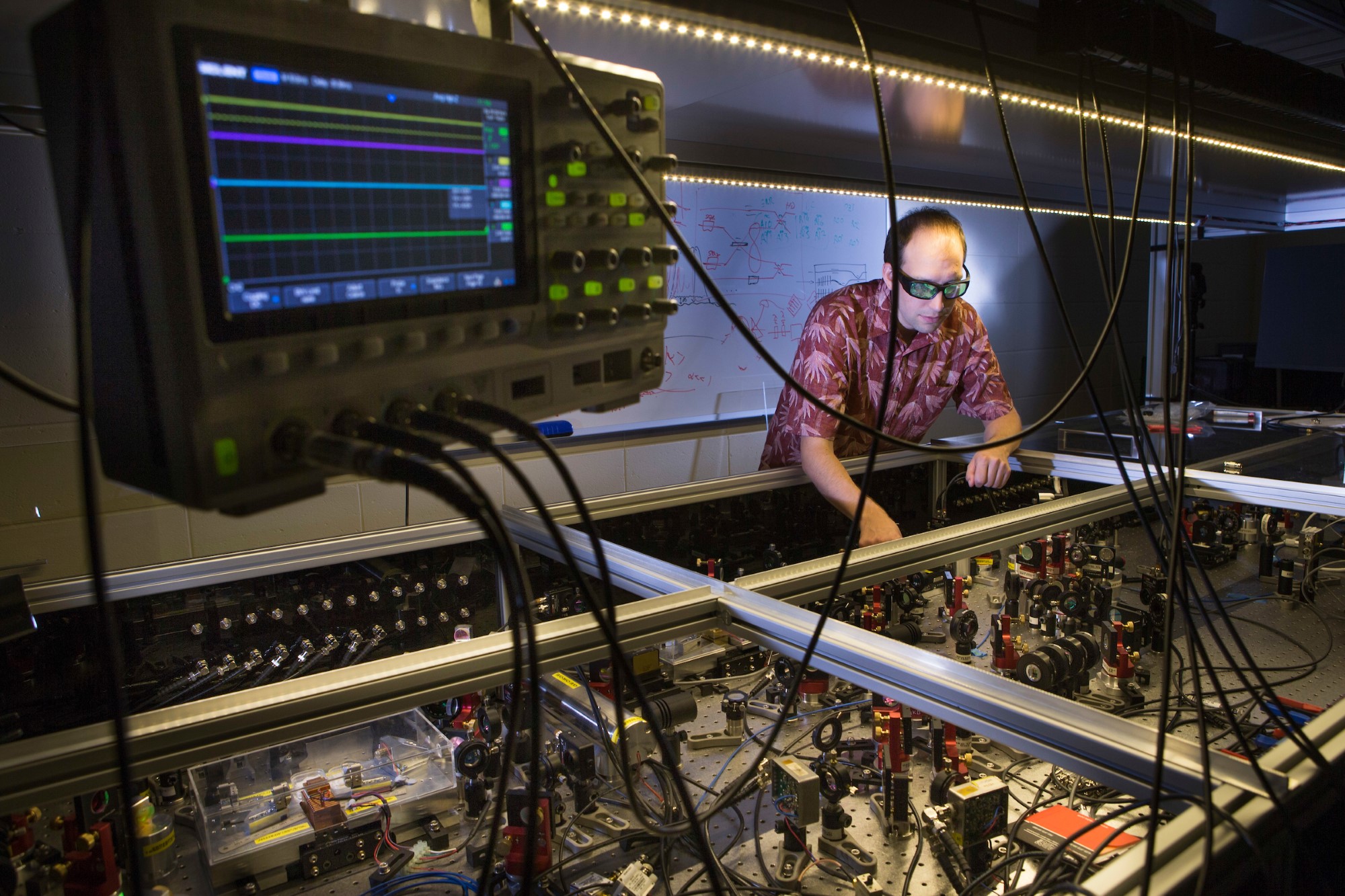
Research projects
Discover the forefront of astronomy and astrophysics through our projects, ranging from deep-space communication systems to groundbreaking adaptive optics. Explore our diverse, ongoing research initiatives shaping the future of space science.
Displaying 136 - 150 of 171 project(s).
Star Clusters as Engines of Ionisation and their HII Regions in NGC 7793
Theme
- Structure and evolution of the Cosmos
We will use simulations of the Milky Way to make predictions for SKA.
Theme
- Structure and evolution of the Cosmos
Student intake
Open for Honours students
Observatory
People
- Dr Aditi Vijayan, Supervisor
- Professor Mark Krumholz, Supervisor
We will use simulations of the Milky Way to make predictions for SKA.
Theme
- Structure and evolution of the Cosmos
Student intake
Open for Honours students
Observatory
People
- Dr Aditi Vijayan, Supervisor
- Professor Mark Krumholz, Supervisor
We aim to build an innovative framework to leverage future 21-cm experiments to observe cosmic dawn, and to forecast the optimal constraints on dark matter.
Theme
- Structure and evolution of the Cosmos
You will use new data from the Australian SKA Pathfinder survey, GASKAP-HI to help take the temperature of the Milky Way and Magellanic Clouds. PhD & Masters students on this project will have the opportunity to be among the first users of ASKAP.
Theme
- Galactic archaeology
- Structure and evolution of the Cosmos
Student intake
Open for Bachelor, Honours, PhD students
People
- Professor Naomi McClure-Griffiths, Supervisor
The effective temperature is one of the most fundamental parameters of a star, and its precise determination is crucial for a number of purposes, e.g., from measuring chemical abundances and ages, to improving stellar and atmosphere models.
Theme
- Galactic archaeology
- Stellar and planetary astronomy
M dwarfs are the most abundant stars in the universe, and prime targets for detecting Earth-like planets.
Theme
- Galactic archaeology
- Stellar and planetary astronomy
We have a variety of projects that will use the new GASKAP-HI data to study the structure and temperature of hydrogen in the Magellanic System.
Theme
- Galactic archaeology
- Structure and evolution of the Cosmos
Student intake
Open for Bachelor, Honours students
People
- Professor Naomi McClure-Griffiths, Supervisor
This research project employed the Wide-Field Spectrograph (WiFeS) to study the extended filaments surrounding a sample of brightest cluster galaxies (BCGs) in massive clusters. Integral-field spectroscopy provides the opportunity to measure the distribution, emission properties, and velocities of the emitting gas across the extent of the galaxies.
Theme
- Black hole phenomena
- Structure and evolution of the Cosmos
We are looking for ambitious students keen to join the project. They can be involved in different aspects, both observational and theoretical/computational
Theme
- Galactic archaeology
- Stellar and planetary astronomy
The ISM of spiral galaxies is a dynamic environment consisting of thermal gas, relativistic particles, magnetic fields, and dust. The project aims to decipher the origin of filamentary structures in the ISM using numerical simulations as well as observational data.
Theme
- Structure and evolution of the Cosmos
This project will simulate observations of the rotation measure (RM) at high Galactic latitude that traces the magnetic structures of the Milky Way. The goal is to pinpoint the cause of the recently discovered asymmetry in the RM patterns between the two Galactic hemispheres.
Theme
- Galactic archaeology
- Structure and evolution of the Cosmos
Student intake
Open for Bachelor, Honours students
People
- Professor Naomi McClure-Griffiths, Supervisor
This project will simulate observations of the rotation measure (RM) at high Galactic latitude that traces the magnetic structures of the Milky Way. The goal is to pinpoint the cause of the recently discovered asymmetry in the RM patterns between the two Galactic hemispheres.
Theme
- Galactic archaeology
- Structure and evolution of the Cosmos
Student intake
Open for Bachelor, Honours students
People
- Professor Naomi McClure-Griffiths, Supervisor
This project delves deep into understanding how stars create elements, contributing to unraveling the mysteries surrounding the origins of elements by extracting and tracing the element compositions of millions of stars using cutting-edge spectroscopic surveys.
Theme
- Galactic archaeology
- Structure and evolution of the Cosmos
